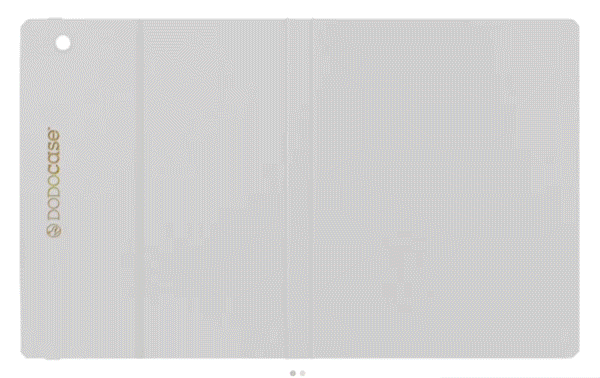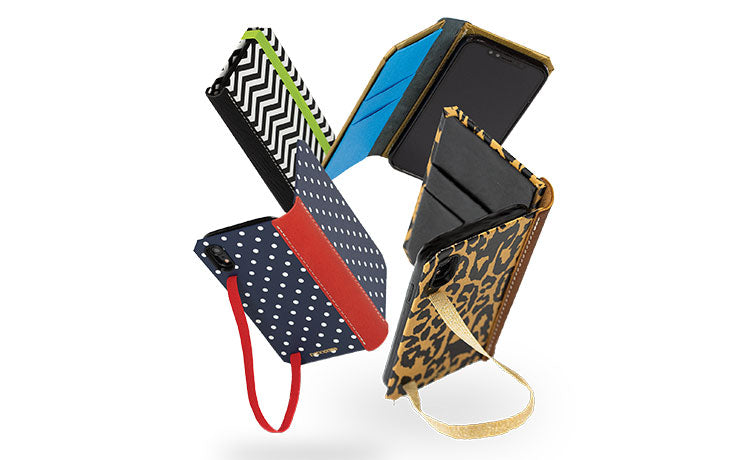Every new iPad owner faces the same dilemma: cover up its beautiful design or risk a costly accident. Apple’s tablets are crafted to be sleek and lightweight, and hiding that engineering under a layer of plastic can feel like a crime.
Yet, the thought of a single drop shattering the screen or denting the aluminum body is enough to cause anxiety. A protective case seems like a simple solution, but it introduces its own trade-offs in weight and style.
The choice goes beyond simple protection; it involves functionality, aesthetics, and how you plan to use your device. So, is a case a necessary shield or an unnecessary accessory? The answer depends entirely on you.
Assessing the Risks: The Case for Protection
The most compelling argument for an iPad case centers on pure pragmatism. While an uncovered iPad is a testament to industrial design, it is also a fragile piece of technology.
The primary function of a case is to act as a shield, safeguarding your investment from the inevitable hazards of daily use and protecting both its appearance and its functionality.
Preventing Scratches, Dents, and Drops
An iPad's aluminum body and glass display are susceptible to cosmetic damage that can happen in an instant. Tossing it into a bag with keys, sliding it across a table, or an accidental bump against a hard surface can leave permanent scratches and scuffs.
A drop, even from a short height, can lead to a cracked screen or a dented corner, both of which are expensive to repair. A well-designed case serves as the first line of defense, absorbing impacts and resisting abrasions that would otherwise mar the device.
It provides peace of mind during transport and everyday handling.
Preserving Resale Value
Your iPad is a significant financial investment, and maintaining its physical condition is crucial for retaining its worth over time. Devices that are free from scratches, dents, and other signs of wear command a much higher price on the secondhand market.
When it comes time to upgrade, a pristine iPad will fetch a better trade-in offer or a higher selling price from a private buyer. A small expenditure on a quality case can translate into a substantial financial return later, effectively protecting the long-term value of your tablet.
Internal Component Safety
Physical damage is not just skin deep; a hard fall can have serious consequences for the delicate electronics inside your iPad. The force from an impact can harm the logic board, dislodge connectors, or damage the battery, leading to performance issues, system instability, or even complete hardware failure.
A good protective case, particularly one with reinforced corners and shock-absorbent materials, is engineered to dissipate the energy from a drop. This protection helps ensure the internal components remain secure and operational, preventing costly repairs and potential data loss.
Functionality and Enhanced Usability

Beyond serving as armor, many modern cases transform the iPad from a simple tablet into a more versatile tool. They add practical features that improve the user experience in tangible ways.
A case can introduce new capabilities, making the device more comfortable to use for both work and leisure and helping to organize its essential accessories.
Stands for Viewing and Typing
Propping an iPad against a stack of books or a coffee mug is a temporary fix, but a case with a built-in stand offers a far more elegant and stable solution. Most folio-style cases allow the cover to fold back into a triangular stand, providing multiple angles.
A steeper angle is perfect for watching movies or making video calls, keeping the screen upright and hands-free. A lower, more ergonomic angle raises the device slightly off a flat surface, creating a comfortable position for typing emails, taking notes, or sketching for extended periods.
This simple addition can significantly boost productivity and comfort.
Improved Grip and Handling
The minimalist design of an iPad, with its smooth metal and glass surfaces, can make it surprisingly slippery and difficult to hold securely. A case remedies this by adding texture and bulk.
Materials like silicone, textured plastic, or leather provide a more substantial and reassuring grip, reducing the constant fear of the device slipping through your fingers. Some specialized cases go a step further by incorporating handstraps on the back, allowing you to hold the tablet securely with one hand while using the other to interact with the screen, a useful feature for presentations or use while standing.
Integrated Storage Solutions
An iPad is often paired with accessories, and keeping them organized can be a challenge. Many cases now include integrated storage designed specifically for the Apple Pencil.
A dedicated slot or magnetic loop not only keeps the stylus securely attached to the iPad but also ensures it is always charged and ready to use. Losing a small, expensive accessory like the Apple Pencil is a common frustration that these cases eliminate.
Some professional folios also feature pockets for business cards, small documents, or credit cards, allowing you to carry everything you need in one neat package.
The "Caseless" Experience: Aesthetics and Practicality

Despite the clear benefits of protection, many users choose to forgo a case entirely. The decision often comes down to prioritizing the device's intended form and feel over the security an enclosure provides.
For these individuals, the arguments for using an iPad without a case are rooted in aesthetics, portability, and a minimalist philosophy that aligns with their specific use habits.
Appreciating the Original Design
Apple invests enormous resources into the industrial design of its products, and the iPad is no exception. Its precision-milled aluminum chassis, clean lines, and seamless glass surface are meant to be seen and felt.
For many owners, covering this meticulous craftsmanship with a layer of plastic feels like a disservice to the product they bought. Using an iPad as its designers intended allows for a direct connection to the materials and build quality, an experience that is immediately lost once a case is applied.
Maintaining a Lightweight Profile
A significant appeal of the iPad is its portability. It is designed to be a thin, lightweight slate that is easy to hold for extended periods, whether for reading, drawing, or browsing.
Any case, no matter how slim, inevitably adds weight and thickness. This additional bulk can fundamentally change the feel of the device, making it more cumbersome to handle and carry.
For users who value the iPad's sleek profile above all else, the added weight of even the most minimal case is an unacceptable compromise that detracts from its core purpose.
The Minimalist Approach: When a Case May Not Be Needed
Context is everything. An individual who primarily uses their iPad in a controlled, low-risk environment may find a case to be superfluous.
If the tablet rarely leaves the house and is used mainly on a soft couch or a secure desk, the probability of a damaging drop or scratch is significantly reduced. In these scenarios, the added bulk and altered aesthetics of a case can feel like a solution to a problem that does not exist.
For these minimalists, the risk of damage is low enough to be outweighed by the pleasure of using the device in its pure, intended form.
A Style Statement: Personalization and Design

While some see a case as a compromise on the iPad's design, others view it as an opportunity for enhancement. An iPad case can be much more than a protective layer; it can function as a fashion accessory that reflects personal taste.
This transforms a uniform piece of technology into a unique object that stands out from the crowd.
Variety of Materials and Designs
The market for iPad cases is incredibly diverse, offering a vast selection of options to suit nearly every aesthetic and lifestyle. For a sophisticated, professional look, there are elegant leather folios that resemble high-end notebooks, perfect for a business setting.
Those who prefer a more modern, understated feel might choose a slim, transparent shell that provides protection without completely hiding the iPad's original design. At the other end of the spectrum are rugged, heavy-duty cases built with layered polycarbonate and rubber, projecting an image of readiness for any environment.
This variety ensures that users do not have to settle for a style that clashes with their needs or preferences.
Expressing Personal Style
An iPad, by its nature, is a mass-produced item identical to millions of others. A case offers an immediate and simple way to break from that uniformity.
It serves as a canvas for self-expression. Choosing a case in a favorite color, a bold pattern, or one featuring a unique graphic allows an owner to infuse their personality into their technology.
It can make the device feel more personal and less like a generic tool. In this way, a case becomes a statement piece that complements an individual's overall style, much like a watch or a handbag.
Finding the Right Balance: Types of Cases for Different Needs

The ideal case is not a one-size-fits-all solution. The best choice is a reflection of your daily life, your priorities, and how your iPad fits into your routine.
Matching the type of case to your specific needs ensures you get the right blend of protection, functionality, and style without unnecessary compromises. Different lifestyles call for different levels of defense and utility.
For the Minimalist
For those who want to interfere with the iPad's design as little as possible, minimalist cases offer a sensible middle ground. Options like Apple's Smart Cover or other slim magnetic covers provide basic screen protection from scratches when the device is in a bag or not in use.
They add almost no weight or thickness and often fold to create a simple stand. Similarly, slim, transparent shells that snap onto the back offer protection against scuffs while leaving the original aesthetic visible. These choices are best suited for careful users who operate in low-risk settings and prioritize form over robust defense.
For the Professional or Student
When the iPad serves as a primary tool for work or education, a case should enhance its productive capabilities. Keyboard cases are a popular choice, effectively transforming the tablet into a lightweight laptop for typing documents, responding to emails, and extensive note-taking.
Folio cases also cater to this group, often featuring professional materials like leather or fabric, multiple stand angles for presentations or video calls, and integrated loops for an Apple Pencil. These cases turn the iPad into a more powerful and organized workstation, making them a practical investment for students and professionals alike.
For the Adventurer or Family
For some users, maximum protection is the only priority. Rugged, heavy-duty cases are built to withstand serious abuse, making them perfect for outdoor enthusiasts, professionals on construction sites, or families with young children.
These cases typically feature a multi-layer design combining a hard polycarbonate shell with a soft, shock-absorbing silicone or rubber outer layer. They often include built-in screen protectors, reinforced corners to handle drops, and covers for ports to keep out dust and debris.
While they add significant bulk and weight, they provide peace of mind that the iPad will survive in demanding and unpredictable environments.
Conclusion
Ultimately, there is no single correct answer to the iPad case question. The choice is a personal calculation of priorities, a trade-off between appreciating the device as its designers intended and safeguarding it from the realities of everyday life.
On one side is the desire to preserve the tablet's sleek design and lightweight feel. On the other is the practical need for protection against accidents and the appeal of added functions like stands or keyboard integration.
The right path depends entirely on your own circumstances. A person using their iPad carefully at home has different needs than a student commuting to campus or a parent sharing the device with children.
By evaluating your daily habits and personal tolerance for risk, you can find the proper balance for your situation.



